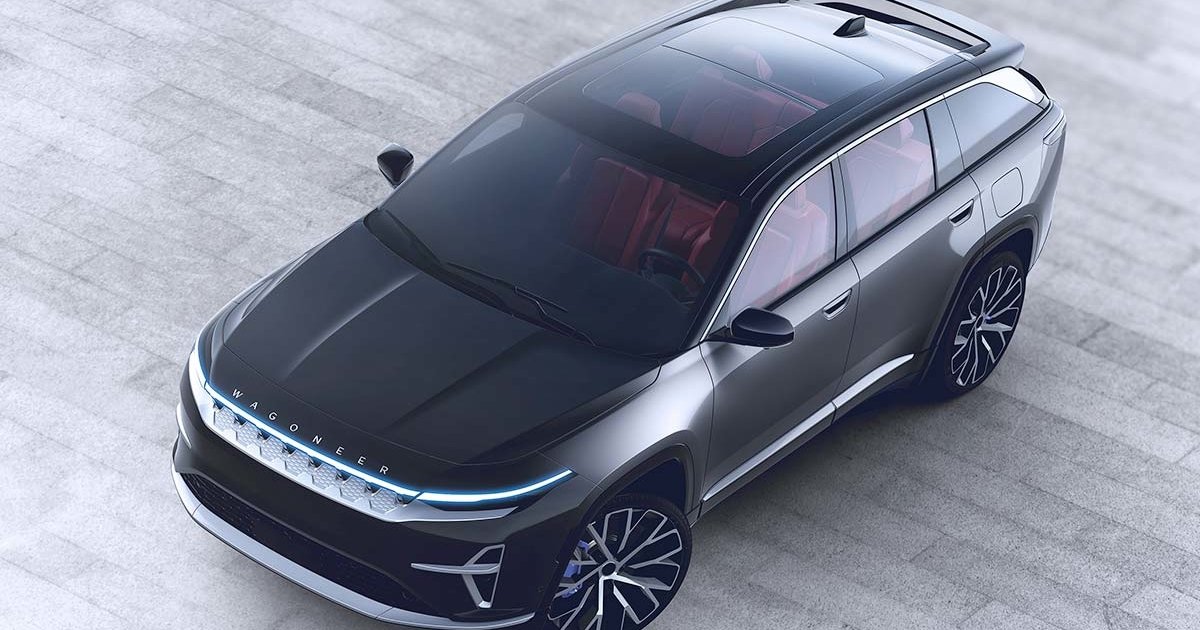
DETROIT — Jeep CEO Christian Meunier says he wants the rugged SUV brand to be viewed as “the antidote to boredom.” And electric Jeeps, he contends, are even more effective medicine.
The first of the brand’s fully electric vehicles — the trail-ready, Wrangler-inspired Recon and the posh, stylish Wagoneer S — will reach North American dealerships in 2024, Meunier said last week, with two more nameplates slated by 2025. Jeep also has a small EV, the Avenger, planned for Europe and parts of Asia starting next year, though executives have deemed it unsuitable for U.S. consumers.
By 2030, Jeep projects that half of its U.S. sales and all of its European sales will be made up of emission-free models such as these. To get there, it’s building a toolbox of electrified options melding off-road prowess with eco-friendly 4xe powertrains.
“I think we found a formula to make Jeep even more exciting while respecting the planet,” Meunier told Automotive News. “The marriage of 4×4 with electric — I think we nailed it.”
Meunier said he expected Jeep’s EVs to generate strong results on “all the coasts and especially California, where our market share is not as good as it should be,” as well as in Europe. With EVs, Jeep can sell the same models globally because it no longer needs to navigate a maze of varying emissions standards, he said.
“People will realize that Jeep is not about big V-8s, it is not about big engines, it’s not about pollution,” Meunier said. “It’s about doing the right thing, having fun at the same time and respecting the environment and enjoying yourself.”
Meunier is banking on projections that battery costs will decrease in the years ahead, making Jeep’s EVs more affordable and helping the brand hit its targets. Its parent company, Stellantis, is working toward introducing solid-state batteries, which are slated to deliver safety, cost, weight and performance improvements over lithium ion batteries, by 2026. Stellantis invested in solid-state battery company Factorial Energy and signed a joint development agreement to advance the technology.
Jeep is looking to reach its 2030 EV sales target by selling premium models, as it always has. The Recon won’t have a stripped-down, $30,000 version.
Meunier said a “very cheap car” is not going to be available in EV form for a while, especially in North America.
“Electrification is more expensive, but the cost is going to decrease, the chemistry is going to improve, the size of the battery will reduce,” Meunier said. “It’s going to take a few years. By [2026-27], solid state will bring some costs down. So there are a lot of things that evolve that will make it easier.”
The rugged Recon follows the Wrangler’s tradition of open-air experiences, while the Wagoneer S shares a name with its bigger counterparts but has its own design language and flair as a midsize crossover. Both will be built in North America.
Meunier wouldn’t share specifics on the Recon’s driving range, saying only that it will be under 400 miles. He believes the Recon can do well overseas, too.
It features Selec-Terrain traction management, e-locker axle technology, underbody protection, tow hooks and off-road tires. It also has the latest-generation Uconnect infotainment system, including travel guides for notable off-road trails.
Jeep is targeting a 400-mile range for the Wagoneer S and aims for it to produce 600 hp with a 0-to-60-mph time of around 3.5 seconds. It will be sold in major markets around the world, including Europe.
“The Wagoneer S is very exciting because it’s a statement of efficiency,” Stellantis design chief Ralph Gilles said at a media briefing last week. “It’s also taking and reinventing that seven-element grille. … You’re really making art of Jeep DNA.”
In addition to those EVs, Jeep is planning to launch Wagoneer 4xe plug-in hybrids in 2024 that have a combined range, using both battery power and gasoline, of 500 miles.
The Recon and Wagoneer S are based on the STLA Large platform that’s designed to support EVs.
Meunier said during the unveiling of the vehicles that being part of Stellantis allows the brand to capitalize on engineering and design resources, software and “all the horsepower that we need to basically accelerate electrification and keep the Jeep DNA intact because that’s what really matters.”
Matt Degen, an editor for Kelley Blue Book and Autotrader, said Jeep made a statement with the Recon by keeping the brand’s off-road spirit.
With that vehicle, Degen said Jeep is making clear that it’s “marching into the electric era just like everybody else, but we are remaining a Jeep. We’re keeping those attributes that make a Jeep a Jeep.”